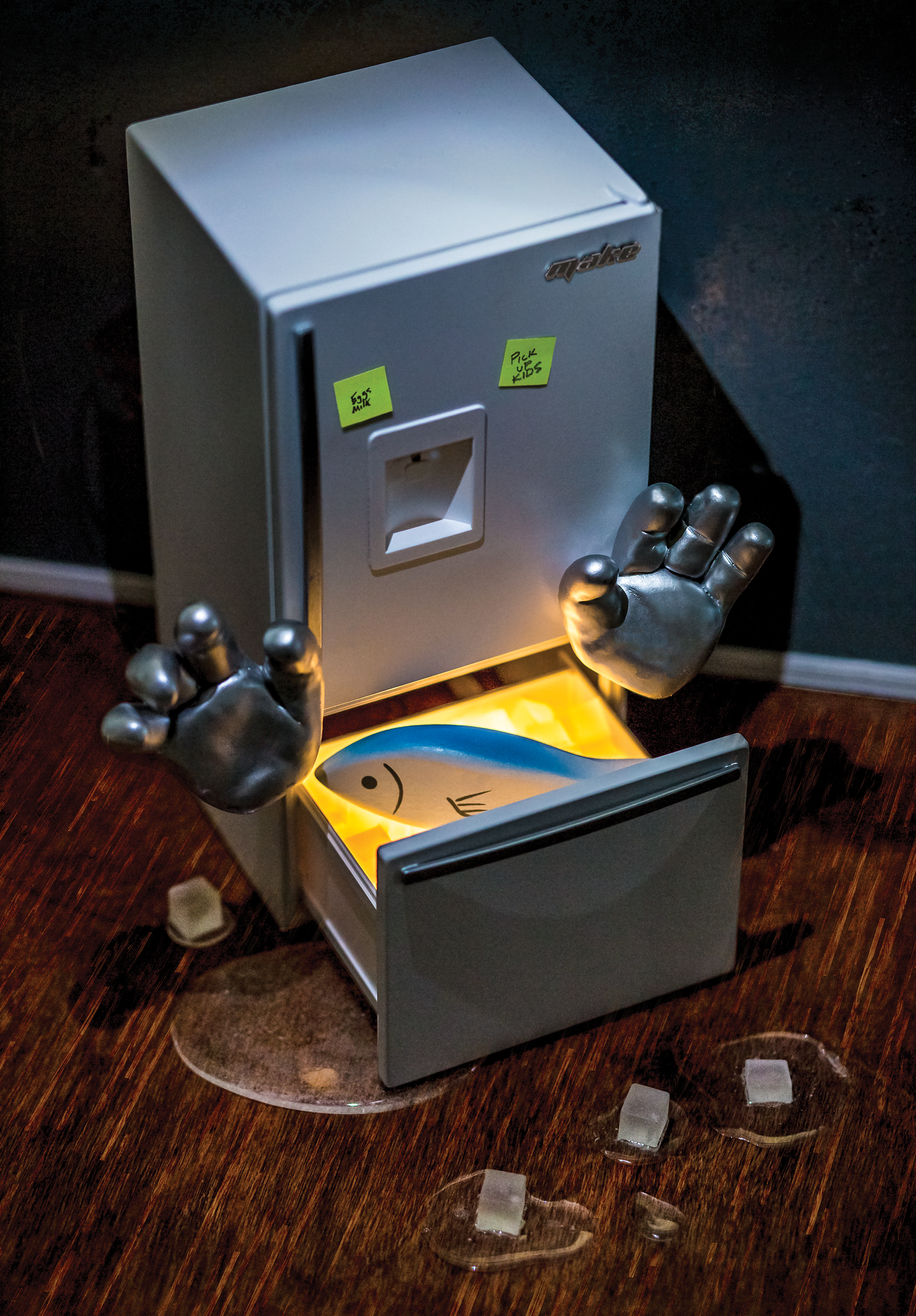The Internet of Things (IoT) is essentially the internet we already have, but now it’s not just humans using it — all kinds of devices are using it too. Today you can buy a washing machine that tweets when it’s done or an irrigation controller that checks the weather before watering.
Free data hosting services, and Arduino libraries for accessing them, make it easy and inexpensive to connect virtually any sensor to the cloud and read data back. These services store historical data, provide analytics tools, and reformat data streams so they’re easy for other devices to read.
The infrastructure is here for experimenting with your own IoT devices. So, what do we want to connect to the internet, and why?
Your fridge is an electricity hog, and every time someone opens the door, all the cold air slides out and the fridge has to cool it again. Opening the door is responsible for 7%–10% of the cost of running a fridge, burning about 28 watt-hours (Wh) every time, or 500 kilowatthours a year —$100 or more annually. And if you leave it open too long, the compressor runs continuously, using about 1kW per hour. Sure, you have to open the door to use the fridge, but perhaps if you know how much those midnight-snacks surveys cost, they won’t seem as appetizing.
This project connects your fridge door to the Xively data service using an Ethernet-connected Arduino and a magnetic sensor. It monitors how often the door is opened and for how long, and creates a persistent data archive you can use to detect usage trends. We chose Xively (formerly called Cosm, formerly Pachube) because it’s straightforward to use, it accurately time-stamps and archives the data, it’s free for small projects like this, and it was started by friends of ours. However, there are many other similar services such as Nimbits, Paraimpu, ThingSpeak, 2lemetry, sen.se, and ioBridge.
NOTE: Of course the circuit we describe in this project consumes energy too. The implementation shown were consumes about 200mA at 9V = 1.8W, or 16kWh per year. This power usage could be reduced 4x by updating less frequently and using CPU sleep modes. Using WiFi instead of Ethernet would also use less power.
Check out the Make Lab’s Cloudfridge feed at: https://xively.com/feeds/640418878






















